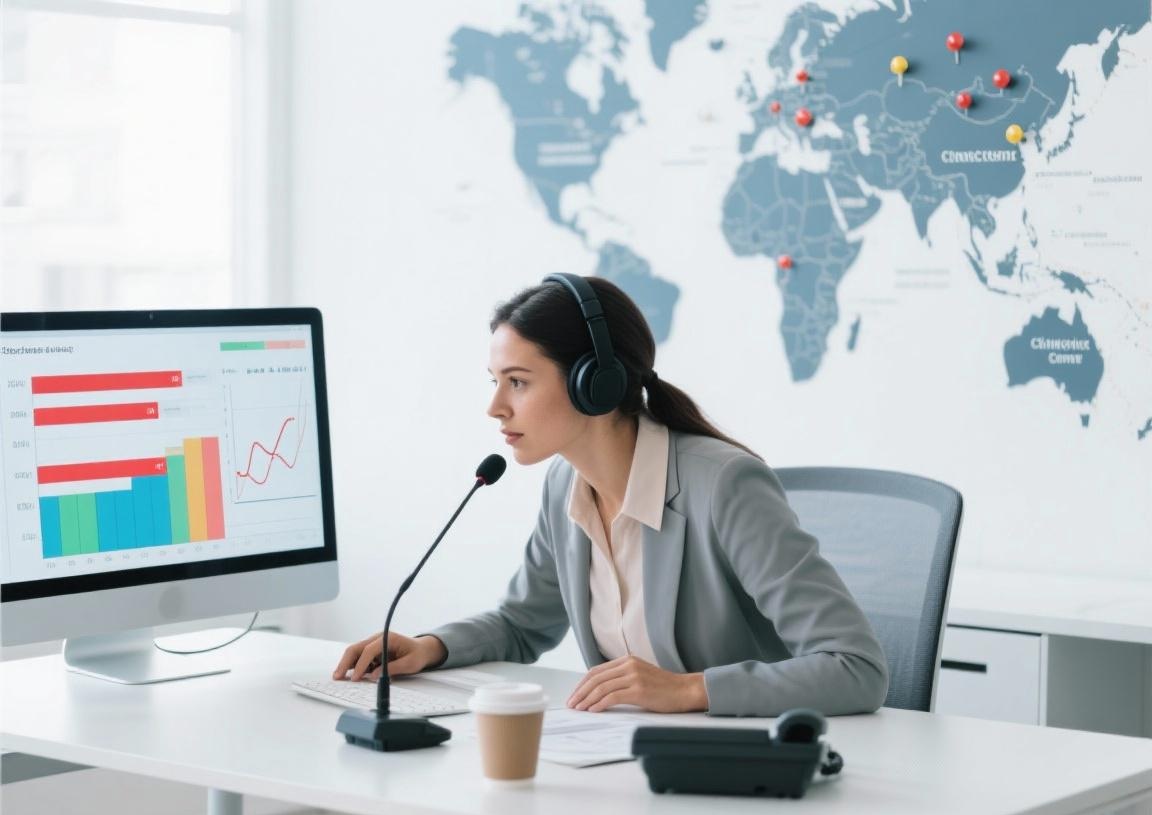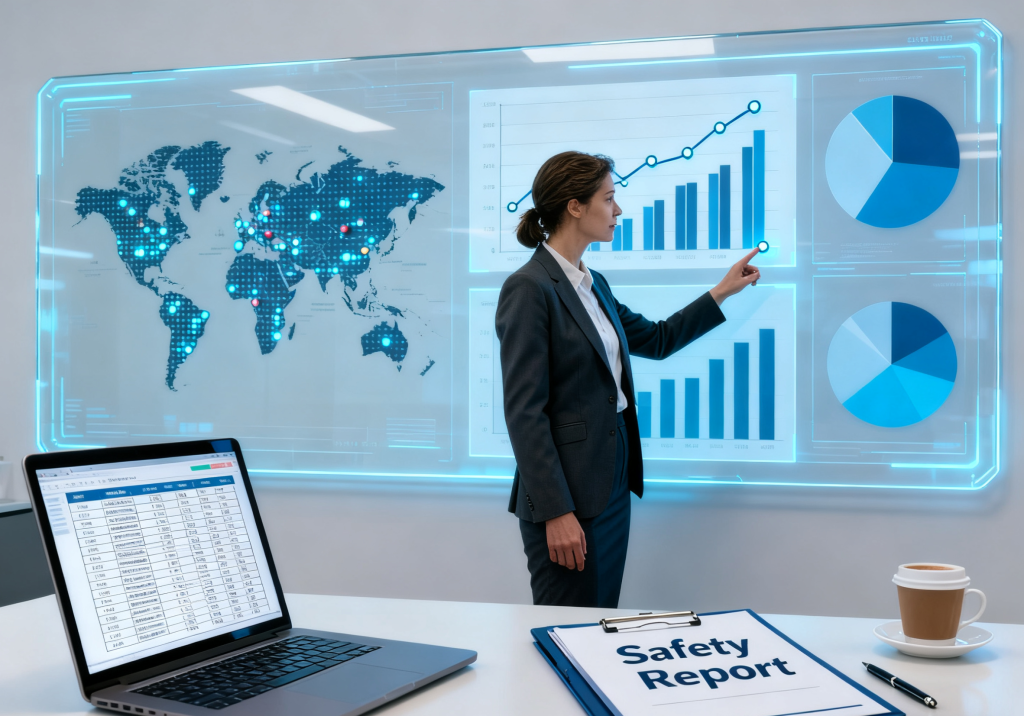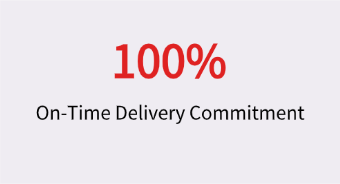The Global Pharmacovigilance (PV) Compliance Guide:
From Urgent ICSR Reporting to DSUR/PSUR Aggregate Submission
Deep Dive into FDA 21 CFR, EMA GVP & ICH E2B(R3) Standards: Ensuring Linguistic Accuracy and Regulatory Compliance Throughout the Drug Lifecycle
Pharmacovigilance (PV) is more than just data collection; it is the scientific cornerstone ensuring drug safety throughout its lifecycle, centering on the acute detection, precise assessment, and effective prevention of adverse effects.
This article delves into strategies for meeting the urgent reporting timelines for ICSRs and SAEs/SUSARs (24/48 hours and 7/15 days), explores best practices for authoring compliant aggregate reports (DSURs/PSURs), and comprehensively analyzes how to satisfy the rigorous requirements of global regulators like the FDA (21 CFR 312.32), EMA (GVP), and ICH (E2B R3).
In a global regulatory environment, linguistic accuracy is directly linked to compliance; we believe that combining deep Subject Matter Expert (SME) review, advanced terminology management technology, and a Global/Regional/Local (GRL) management model is key to ensuring data consistency across regions and systems (e.g., Veeva/Oracle) and effectively mitigating audit risks.
Stakeholder Insights For Pharmacovigilance (PV) localization:
Tailored Strategies by Role
- For Regulatory Affairs Managers / PV Heads
- For Clinical Operations Managers
- For Procurement Managers
- For PV Case Processors
- For PV QA
Mitigating FDA 483 Risks:
High-FDA Translation Strategies for SAE 7/15-Day Deadlines and PBRER Medical Evaluations

For Regulatory Affairs Managers, the most daunting challenge is completing high-quality submissions within the extremely tight reporting windows for SAE/SUSAR (7/15 days) and ICSR (24/48 hours). Any delay could directly violate regulations like 21 cfr 312.32, potentially inviting regulatory penalties such as an fda 483 observation or Warning Letters. Furthermore, when handling a pbrer report, complex “benefit-risk evaluations” can directly impact regulatory judgment on drug safety if medical terminology is mistranslated. ECI’s solution delivers “High-FDA Submission Quality”: utilizing a full-time sme (Subject Matter Expert) team with medical backgrounds for deep review, ensuring every medical description is precise. Simultaneously, we leverage a GRL (Global/Regional/Local) management model, especially through regional offices like Budapest, to provide localized support compliant with ema, fda, and nmpa regulations, eliminating compliance risks at the source.
Solving Multi-Center Trial Communication:
24/7 Emergency Response and Consistency Management for IND Safety Reports

Clinical Operations Managers often face sudden crises: a susar accompanied by foreign literature appears and must be translated and submitted to the fda within an incredibly short timeframe. A lack of rapid response mechanisms often leads to communication lags, increasing compliance risks. In global multi-center trials, ensuring linguistic consistency across site documents (like ICF, CSR) is also a major headache; inconsistent data directly undermines the credibility of clinical trial data. To address these pain points, we have established a 24/7 emergency response mechanism with core and backup teams, specifically simplifying workflows for urgent projects like sae reporting (e.g., SUSAR) to deliver within 1-3 days. As a one-stop multilingual service provider, we ensure high consistency between global site documents and source files through centralized project management, making your ind safety reporting both fast and compliant.
Cutting Costs for DSUR Annual Reports:
Mitigating Outsourcing Risks with TM Technology and ISO-Certified Workflows

Localization Managers are well aware of the pain points with annual reports like dsur and psur: they are voluminous and updated frequently. Retranslating full texts creates a bottomless pit of costs. Meanwhile, facing uneven vendor quality, it’s hard to distinguish the risks behind low prices, especially the fear of process loss of control due to part-time or student teams. ECI brings value through technology empowerment and transparent processes. We utilize Translation Memory (TM) technology to offer significant discounts of 30%~70% for development safety update reports with repetition rates as high as 50-60%, drastically reducing budgets. Furthermore, we hold full ISO 9001/17100/27001 certifications and can provide proof of full-time teams, completely avoiding outsourcing black boxes. For complex formatting issues, our full-time DTP team uses engineering automation tools to protect document Tags, saving you the headache of format adjustments.
Optimizing PV Workflows:
Intelligent Terminology Management and ICSR Verbatim Translation Solutions

PV Case Processors race against time daily, handling massive volumes of icsr within tight deadlines while meeting rigorous regulatory requirements to retain the original reporter’s “Verbatim” text. Another nightmare is terminology inconsistency: meddra coding often “drifts” between different annual reports or platforms (e.g., ClinicalTrials.gov vs. FDA). Formatting is also a time-black hole, especially when dealing with data-heavy aggregate reports. Our solutions aim to unburden you: a terminology management system utilizing dynamic databases and intelligent extraction ensures meddra coding consistency across all documents. For ICSRs, we provide specific streamlined workflows (e.g., Skip random query) that guarantee speed while strictly meeting Verbatim requirements. Additionally, introducing AI/MT tools to assist with draft translation and term matching can significantly reduce manual repetitive labor, allowing you to focus on core medical writing.
Securing PV Data:
ISO 27001 Certification and Seamless E2B(R3) System Integration

Data security and compliance are the bottom line for PV QA and System Architects. The biggest fear is translation content leaking during transmission or deliverables failing to seamlessly dock with existing pharmacovigilance systems (like Veeva, Oracle). If a vendor’s process lacks audit trails, it could even lead to failing a GCP/PV audit. ECI holds ISO 27001 Information Security certification, ensuring your data always flows within a closed, secure system. On the technical front, we possess strong system integration capabilities, able to develop APIs/Connectors to directly interface with your CMS/TMS or pv safety database, ensuring translation content complies with electronic transmission standards like ich e2b(r3). Most importantly, our full-time teams and strict QA systems guarantee that every step is traceable, fully meeting the most stringent audit requirements.
The Core Guide:
An In-Depth Look at Informed Consent Form (ICF) localization
ICSR Strategy: How to Manage Individual Case Safety Reports (ICSRs)?
ICSR Translation Strategy: Conquering 24-Hour Reporting Deadlines and Multilingual Compliance
In the realm of pharmacovigilance icsr, PV case processors often face the immense pressure of submitting an individual case safety report (ICSR) within extremely tight deadlines (typically 24 or 48 hours). This is not just about speed, but also data accuracy and compliance. According to the ICH E2B(R3) guideline, while English is standard for international transmission, there are strict requirements for retaining original information:
Provided in English for International Transmission. • Exceptions: • Reaction/Event as Reported by the Primary Source in. Native Language[1].
This means that during icsr submission, the reporter’s native language description must be accurately translated and preserved. Furthermore, the guideline highlights the importance of case summaries:
‘Case Summary and Reporter’s Comments in Native. Language'(H.5.r).[2].
To ensure icsr compliance and avoid safety signal distortion due to linguistic errors, ICH E2D(R1) further states:
The ICSR should include the verbatim terms as used by the reporter, or an accurate translation.[3].
Facing this dual challenge of multilingualism and high urgency, relying solely on manual processes is often insufficient. Industry data indicates:
Leveraging AI for fast, cost-effective translations allows you to meet multilingual reporting requirements while reducing overall cycle times by 40%.[4].
Addressing such pain points, it is suggested to consider an all-weather response model. For instance, establishing global Core & Backup Teams ensures 24/7 resource coverage; for small-volume urgent cases, optimizing the case processing workflow (e.g., Skip random query) can be considered to prioritize meeting icsr in pv regulatory deadlines while maintaining accuracy.
SAE/SUSAR Reporting: Streamlining Serious Adverse Events (SAE) and SUSAR Reporting in Clinical Trials
Accelerating SAE/SUSAR Reporting: Translation Compliance and Risk Avoidance Under 7/15-Day Timelines
In clinical trials, the timeliness of sae reporting is directly related to subject safety and compliance. According to the ICH E2A Guideline, there are clear mechanisms for expedited reporting:
It also gives guidance on mechanisms for handling expedited (rapid) reporting of adverse drug reactions in the investigational phase of drug development…[5].
This means a serious adverse event must be reported within a strict 7 or 15-day window. However, the challenge doubles when susar reporting involves foreign literature. FDA guidance explicitly states:
When a serious, unexpected adverse experience is based on a foreign language article or manuscript, the applicant should translate the publication into English promptly.[6].
Translation delays not only increase the burden of internal review for the Sponsor but may also lead to violations of sae reporting timelines. Professional solutions should aim to streamline this process:
Our streamlined process translates your critical pharmacovigilance documents with unmatched accuracy, speed, and compliance…[7].
To handle such sudden spikes, it is recommended to establish an Emergency Response Mechanism. By allocating elastic resources where core members coordinate with a second-tier team, high-quality susar translations can be delivered within the 1-3 days required for fda sae reporting, effectively mitigating regulatory risks.
DSUR Reporting: How to Write a Compliant Development Safety Update Report (DSUR)?
Optimizing DSUR Annual Reports: Leveraging TM Technology to Cut Costs and Ensure Cross-Regional Consistency
The development safety update report (DSUR) is a critical periodic document during drug development. The ICH E2F Guideline aims to establish it as a common standard to promote consistency:
The Development Safety Update Report (DSUR) proposed in this guideline is intended to be a common standard for periodic reporting on drugs under development…[8].
However, since dsur submission often involves thousands of pages and requires submission across different regulatory regions, consistency in terminology and content becomes a huge challenge.
For dsur in clinical trials, the content of annual reports is often highly repetitive (iterative updates). Charging for full-text translation would result in exorbitant costs. Industry solutions indicate:
Our solutions are designed to streamline the process of translating adverse event reports… utilizing a combination of machine translation, human expertise, and specialized technology…[9].
It is suggested to fully utilize Translation Memory (TM) technology. Considering that repetition rates for large submissions like IND/NDA can reach 50%-60%, TM technology not only significantly reduces costs (providing discounts for repetitive content) but also ensures long-term terminology consistency under dsur fda guidance, alleviating the review burden for regulatory affairs managers.
PSUR/PBRER Reporting: How to Prepare Periodic Safety Update Reports (PSUR) & PBRERs?
Preparing PSURs & PBRERs: Ensuring Medical Precision in Benefit-Risk Evaluation Translations
With the implementation of ICH E2C(R2), the role of the periodic safety update report (PSUR) has evolved into the periodic benefit risk evaluation report (PBRER). This shift significantly raises the requirements for report depth. The ICH Guideline explains:
The purpose of this Guideline’s revision is to ensure that the periodic safety update reports for marketed drugs have the role of being periodic benefit-risk evaluation reports…[10].
This means translation is no longer just language conversion; it requires accurately conveying complex safety assessments and benefit-risk analyses.
General translators often struggle to master the specialized medical descriptions in psur medical device or drug reports, which can lead to the distortion of key information in psur submission. As the industry emphasizes:
Accurate translations of pharmacovigilance documents are essential for maintaining regulatory adherence and ensuring safety.[11].
Therefore, when preparing a pbrer report, it is recommended to introduce a Subject Matter Expert (SME) review mechanism. By employing a full-time translation team with clinical medicine or pharmacy backgrounds and implementing a tiered proofreading process, one can effectively ensure the medical precision required by pbrer ema and psur fda, avoiding compliance risks.
QPPV Services: How to Establish Efficient QPPV Systems for China and Europe (EU QPPV)?
Building QPPV Systems: Linguistic Compliance Under the Global/Regional/Local (GRL) Model
Establishing an efficient qppv services system, especially when involving eu qppv and local qppv, requires rigorous planning following the ICH E2E Guideline. The guideline states:
This Guideline is intended to aid in planning pharmacovigilance activities, especially in preparation for the early post-marketing period of a new drug…[12].
A QPPV needs to handle multilingual safety data from around the globe; single-region vendors often struggle to cover all languages while complying with local regulations.
To achieve global pharmacovigilance qppv compliance, reliance on efficient translation workflows is mandatory:
Our solutions are designed to streamline the process of translating adverse event reports… utilizing a combination of machine translation, human expertise, and specialized technology…[13].
It is recommended to adopt a GRL (Global/Regional/Local) management model. By combining unified global standards with localized support from regional offices (e.g., in Europe or APAC), one can satisfy the global consistency requirements of qppv clinical trials while ensuring the qppv pharma system complies with specific market regulatory details.
PV/GCP Translation Services: How Life Science Translation Ensures Global Compliance for Pharmacovigilance (PV) and GCP?
PV & GCP Translation Compliance: Quality Assurance from ISO Certification to Full-Time Teams
In clinical trial translation and pharmacovigilance translation, compliance is the core consideration. ICH Efficacy Guidelines clarify the scope:
The work carried out by ICH under the Efficacy heading is concerned with the design, conduct, safety and reporting of clinical trials.[14].
This implies that all pharmacovigilance document translation must meet high standards to support trial design and reporting. Additionally, FDA regulations (21 CFR 312) have strict rules for non-English materials:
The sponsor shall submit an accurate and complete English translation of each part of the IND that is not in English.[15].
Considering that in a gcp environment, each trial site may require specific contacts and communication:
Each location where the study is being conducted may also have a specific contact, who may be better able to answer those questions.[16]
, the accuracy of localized communication cannot be overlooked. As the industry states:
Accurate translations of pharmacovigilance documents are essential for maintaining regulatory adherence and ensuring safety.[17].
To mitigate audit risks, it is recommended to prioritize vendors with ISO certifications (such as ISO 17100/9001) when selecting gcp translation services. Simultaneously, verify if they possess a full-time translation team rather than temporary freelancers to ensure process traceability and strict execution of good clinical practice pharmacovigilance.
FDA Regulations & Compliance: How to Meet FDA Drug Safety Reporting Requirements (e.g., 21 CFR 312.32)?
Meeting FDA 21 CFR 312.32: Mitigating 483 Defects with High-FDA Quality
Meeting fda drug safety reporting requirements, particularly 21 cfr 312.32, is vital for sponsors. The ICH E2A Guideline lays the foundation for clinical safety reporting:
The ICH Harmonised Guideline was finalised under Step 4 in October 1994. This document gives standard definitions and terminology for key aspects of clinical safety reporting.[18].
Failure to follow these standards can lead to non-compliance in fda ind safety reporting.
FDA inspections are rigorous; 21 CFR 312.32 requires prompt investigation of all safety information. Violations can result in an FDA Form 483:
The sponsor must promptly investigate all safety information it receives…. The FDA Form 483 notifies the company’s management of objectionable conditions.[19].
An effective response is crucial:
> Effectively responding to an FDA Form 483… is critical for any FDA-regulated company.[20].
To ensure smooth fda sae reporting, it is suggested to adopt a “High-FDA submission quality” delivery standard when submitting IND/NDA materials. This typically requires combining TEP (Translation-Editing-Proofreading) workflows with deep SME review to eliminate linguistic defects at the source, ensuring all medwatch form 3500a and related documents precisely meet FDA safety reporting requirements.
EMA/EU Regulations: How to Comply with EMA Regulations and Eudravigilance Requirements?
EMA & Eudravigilance Compliance: Solving European Rare Language and ICSR Electronic Transmission Challenges
When reporting to the ema, the biggest challenge often comes from accurately handling multilingual source text. EMA GVP Guidelines explicitly state:
Under the EMA’s Good Pharmacovigilance Practices (GVP) guidelines, ICSRs must include either the verbatim text used by the primary source or an accurate translation.[21].
This imposes a strict requirement for verbatim translation in ema pharmacovigilance. Meanwhile, ICH E2B(R3), as the standard for electronic transmission, emphasizes collaboration with SDOs to achieve interoperability:
The ICH Steering Committee had taken a key decision that technical specifications… should be created in collaboration with Standards Development Organisations (SDOs)…[22].
Furthermore, regarding ema pbrer, FDA guidance also mentions alternative reporting formats using ICH E2C(R2), further promoting format unification:
This guidance describes the conditions under which applicants can use an alternative reporting format… ICH E2C(R2) Periodic Benefit-Risk Evaluation Report (PBRER)…[23].
Facing the multitude of European languages involved in eu pharmacovigilance, it is recommended to leverage partners with European headquarter advantages. For instance, full-time teams based in locations like Budapest can provide localized support with no time zone or cultural barriers, ensuring the linguistic quality of eudravigilance reports and compliant execution of the eu individual case safety report icsr implementation guide.
ICH/CIOMS/GCP Guidelines: What are the Core PV Requirements from ICH, CIOMS, and GCP?
PV Practice Under ICH & GCP Guidelines: Ensuring Data Consistency and MedDRA Terminology Standardization
Adhering to ich guidelines and gcp is the cornerstone of pharmacovigilance compliance. The GCP (E6) standard emphasizes the credibility of trial data:
Good Clinical Practice (GCP) is an an international ethical and scientific quality standard for designing, conducting, recording and reporting trials…[24].
When drafting the ich e2f dsur, the ICH E2F Guideline further targets a “common standard”:
The Development Safety Update Report (DSUR) proposed in this guideline is intended to be a common standard for periodic reporting on drugs under development…[25].
However, in practice, terminology inconsistencies between documents (like the cioms form) and ich e2c psur frequently occur. Additionally, FDA requirements for ICSR are extremely specific:
Record the original reporter’s words verbatim and/or use short phrases to describe the reaction/event in element (B.2.i.0).[26].
Discrepancies across reporting platforms (e.g., ClinicalTrials.gov vs. FDA) are also a major pain point:
…there will be differences between the information reported on ClinicalTrials.gov and in other reports… because of differences in the underlying statutory framework…[27].
To resolve these conflicts, it is recommended to deploy an advanced terminology management system. Through a process of “dynamic database + intelligent extraction + lock-and-update,” one can ensure consistency in MedDRA coding and key terms throughout the lifecycle of ich pharmacovigilance documents, meeting the high standards of cioms in pharmacovigilance.
PV Outsourcing & Consulting: How to Select the Right Pharmacovigilance (PV) Service Provider?
PV Outsourcing Selection Guide: Medical Precision, AI Technology, and Transparent Processes
When selecting a right pharmacovigilance services provider, the primary consideration is the precise handling of complex medical terminology. Medical documents are filled with specialized terms like “dose-limiting toxicity”; professional research notes:
Medical documents contain specialised terminology that does not have direct translations in all languages… terms like ‘dose-limiting toxicity’ or ‘QT prolongation’ must be translated with precision…[28].
Furthermore, multilingual glossaries are crucial for training machine translation:
A multilingual glossary of terms and definitions, which could be used to program a dedicated machine translator, would be of value.[29].
Beyond linguistic capability, the use of AI-powered regulatory intelligence tools is key to measuring a drug safety service provider’s capability:
AI-powered regulatory intelligence for enhanced productivity… Multilingual conversational search. Intelligent summarization.[30].
When evaluating pharmacovigilance outsourcing, it is advised to avoid low-cost traps and instead examine the vendor’s overall strength. Validating their full-time team quality, proprietary technology platforms (like TBMS), and ISO certifications through pilot projects helps in selecting a truly reliable global pharmacovigilance partner.
PV Vendors & Systems: How to Evaluate Pharmacovigilance Competitors & Systems (e.g., Veeva, Oracle, Parexel, ICON)?
PV System Integration & Evaluation: Ensuring Data Security and E2B(R3) Compatibility in Veeva/Oracle Environments
Existing pharmacovigilance systems (such as veeva pharmacovigilance and oracle pharmacovigilance) must strictly follow international standards. The FDA notes that ISO/HL7 standards are designed for ICH E2B(R3):
ISO/HL7 27953-2 (Part 2) is designed at a conformance profile for Part 1 for use by the International Conference on Harmonisation (ICH) revised guideline E2B(R3)…[31].
Therefore, translation providers must have integration capabilities compatible with these data structure standards.
Additionally, leveraging AI to accelerate decisions is a crucial dimension in competitor analysis:
Accelerate decisions with trusted AI, purpose-built to meet the precision and compliance standards regulatory professionals demand.[32].
When selecting supporting language services, it is recommended to focus on technical integration and information security. Prioritize vendors capable of developing APIs/Connectors to interface with client CMS/TMS/PV systems, and ensure they hold ISO 27001 Information Security certification. This ensures translation content flows within a closed system, achieving seamless docking with mainstream pharmacovigilance solutions and safeguarding data.
Core Concepts: What is Pharmacovigilance and Drug Safety?
Decoding Pharmacovigilance: From Adverse Reaction Monitoring to the Bridging Role of Translation
Understanding the core definition of pharmacovigilance is a prerequisite. It is defined as:
Pharmacovigilance is the science and practice involved in the identification, assessment, comprehension, and mitigation of any adverse effects associated with any medication or antibody.[33].
Its core goal is ensuring safety throughout the drug lifecycle, as stated in literature:
Pharmacovigilance refers to the science and activities related to the detection, assessment, understanding, and prevention of adverse effects… It plays a crucial role in ensuring the safety of medicinal products throughout their lifecycle.[34].
In the context of global drug safety, translation acts as the bridge connecting global monitoring data. However, many clients lack awareness of localization processes (like the value of TM).
It is suggested to adopt an educational consulting strategy. Through detailed quoting explanations and technical briefings (e.g., advantages of source-language billing, TM principles), one can help establish a correct understanding of long-term cost control in drug safety and pharmacovigilance, leading to the selection of the most suitable language partner.
PV & Clinical Research: What is the Role of Pharmacovigilance in Clinical Trials?
The Role of PV in Clinical Trials: Multi-Center Collaboration and Rapid Communication of IND Safety Reports
Pharmacovigilance in clinical trials plays a key role in ongoing risk assessment. The ICH E2F Guideline emphasizes:
During the clinical development of an investigational drug, periodic analysis of safety information is crucial to the ongoing assessment of risk to trial subjects.[35].
In multi-center trials, language barriers often lead to data inconsistencies, as studies show:
Additionally, 17 (42.5%) publications exhibited discrepancies in the description of SAEs.[36].
For sae reporting, the FDA permits rapid communication methods in certain cases:
If the IND is not in eCTD format, other means of rapid communication (e.g., telephone, facsimile transmission, email) may be used.[37].
This demands extremely high response speeds from translation services.
To ensure compliance and consistency in global clinical research data, it is recommended to adopt a one-stop multilingual service. By using centralized project management to coordinate all linguistic needs regarding the role of pharmacovigilance in clinical trials, one can ensure high consistency between all language versions and the source file.
Aggregate Reporting: What are Aggregate Reports in Pharmacovigilance?
Managing Aggregate Reports: Tackling PBRER Format Conversion and Massive Data DTP Challenges
Aggregate safety reports are a major part of PV work. ICH E2C(R2) provides detailed Q&As:
ICH topic E 2 C (R2): Questions and answers… Keywords: Periodic benefit-risk evaluation report (PBRER)…[38].
The FDA also issued guidance allowing PBRER formats to replace traditional reports:
This guidance describes the conditions under which applicants can use an alternative reporting format… ICH E2C(R2)… in place of… PADER…[39].
However, a significant challenge in aggregate reporting is “narrative drift” and data inconsistency:
A total of 38 trials inconsistently reported the number of individuals with a serious adverse event (SAE)…[40].
Moreover, these reports are usually voluminous, containing many complex charts.
Facing the formatting challenges of a periodic safety report, it is recommended to utilize a DTP (Desktop Publishing) team with engineering automation capabilities. Using professional tools to protect document Tags ensures that during the multilingual conversion of aggregate reporting in pharmacovigilance, formats remain intact, allowing the translation team to focus on content accuracy.
Individual Case Safety Report (ICSR): What is an ICSR? How does it differ from an SAE Report?
Deep Dive into ICSR: Verbatim Translation and Reporting Timelines Under ICH E2B(R3)
ICSR is closely related to SAE reporting but is more specific in technical standards. ICH E2B(R3) established the international standard for its electronic transmission:
ICH E2B(R3) is the international standard for the electronic transmission of Individual Case Safety Reports (ICSRs)…[41].
The key to compliance lies in the faithful recording of original information; FDA requires:
Record the original reporter’s words verbatim and/or use short phrases to describe the reaction/event in element (B.2.i.0).[42].
Regarding timelines, regulations offer no room for compromise. For clinically important serious events, FDA mandates:
The sponsor shall report… any clinically important increase in the rate of a serious adverse event… in no case later than 15 calendar days…[43].
Therefore, when handling ICSRs, it is suggested to strictly follow the “verbatim translation” principle and establish an agile workflow capable of meeting the mandatory 7-day/15-day deadlines, ensuring all electronic transmission elements comply with ICH E2B standards.
MedDRA Coding: What is the Role of MedDRA Coding in the PV Process?
MedDRA Coding & Translation: Ensuring Terminology Standardization and Signal Detection Accuracy as Required by CDE
The accuracy of MedDRA coding is the cornerstone of safety signal detection. EMA GVP Guidelines highlight the role of high-quality translation:
The accurate MedDRA coding of ICSR narrative text, which relies on high-quality translation of non-English narratives, is essential for safety signal detection.[44].
In China, CDE also explicitly requires:
The MAH should use the Medical Dictionary for Regulatory Activities (MedDRA) to code adverse drug reactions and pharmacovigilance-related information.[45].
Terminology standardization is crucial to avoid misinterpretation:
The need to standardise the terminology used to describe adverse events… It is crucial that the translation of these specific scientific and technical terms is accurate…[46].
It is recommended to tightly integrate the translation process with MedDRA coding. By using professional terminology bases and coding tools, ensure that all translated text (especially ICSR narratives) strictly aligns with MedDRA standard terms, satisfying the PV data standardization requirements of CDE and global regulators.
EC Innovations possesses a dedicated life sciences team,
a rigorous quality management system, and state-of-the-art technology.
EC Innovations Life Sciences Business Unit comprises experienced Project Managers , specialized native-speaking linguists (translators, editors, proofreaders) , and Subject Matter Experts (SMEs). Each member possesses relevant academic backgrounds (e.g., Master’s/Ph.D.s in fields like biology, biochemistry, or medicine ) and extensive experience in translating complex clinical trial documentation, including Clinical Study Reports (CSRs). We meticulously select team members with the precise domain expertise required for your specific therapeutic area , covering areas such as oncology, systemic diseases, anesthesia, vaccines, and more.





Get in touch
If you’d like to know more about how we might work together, please use this contact form to get in touch. All the information you provide will remain confidential – and we’ll get back to you within 24 hours.
"*" indicates required fields